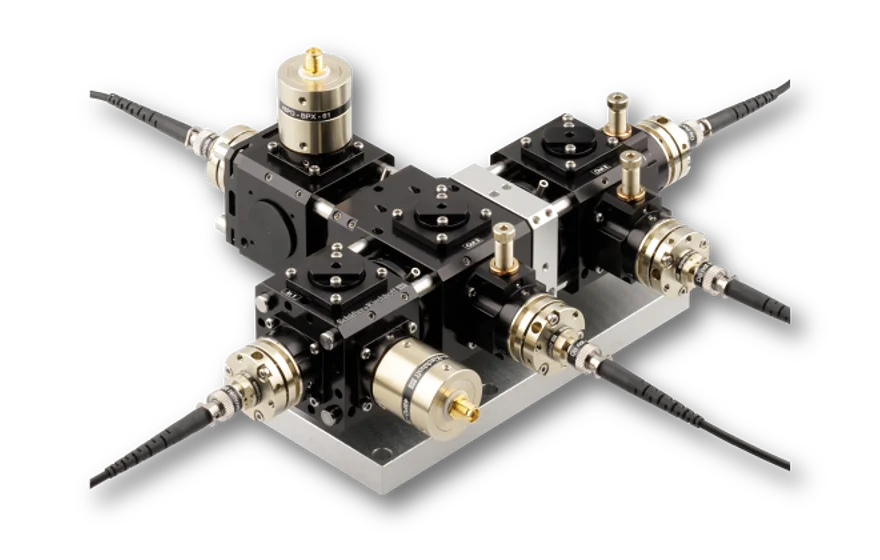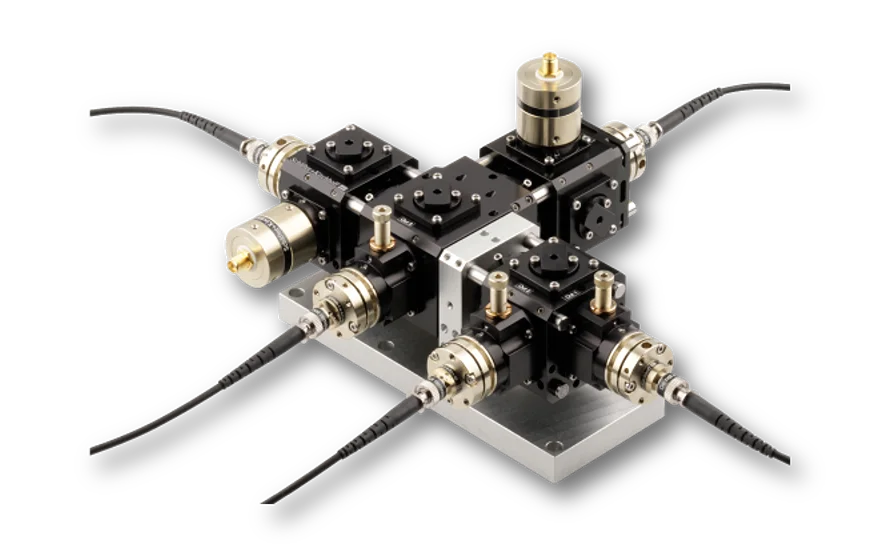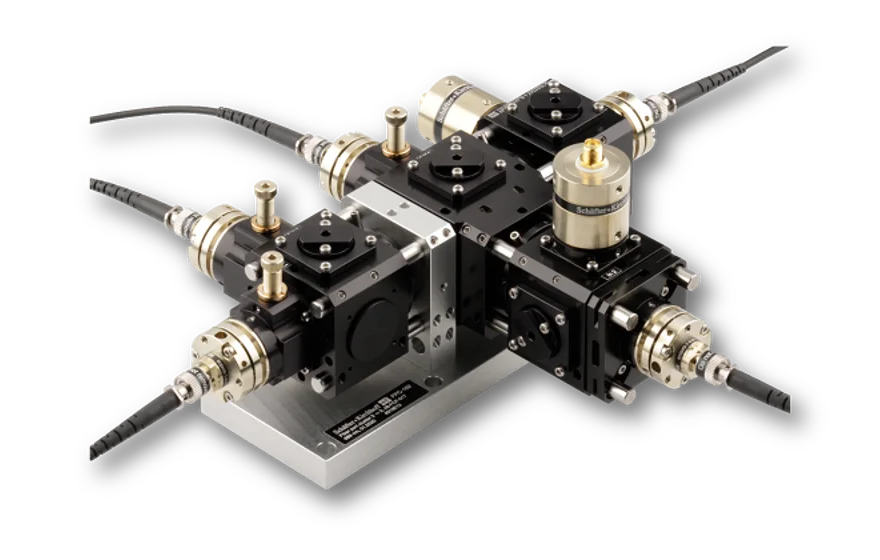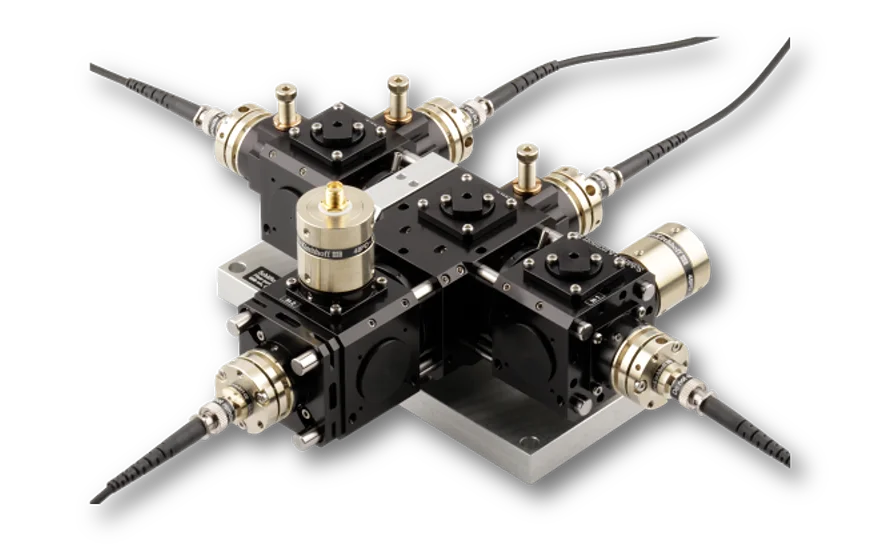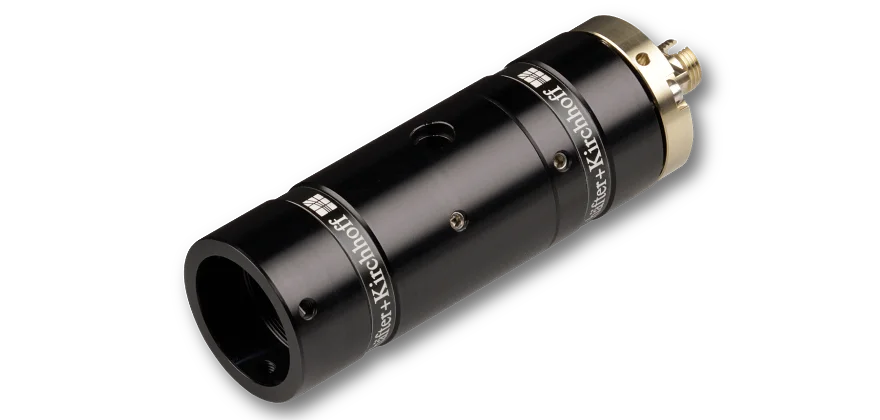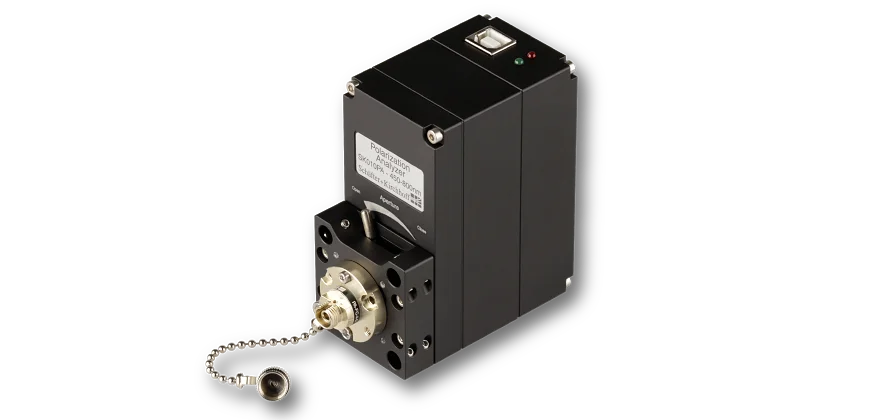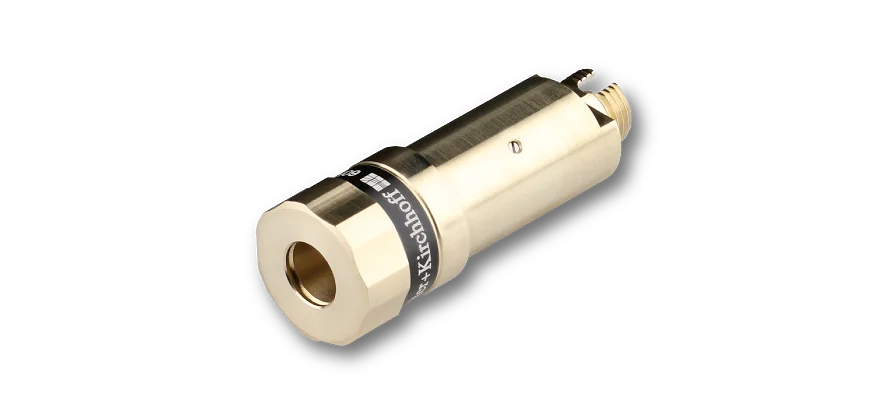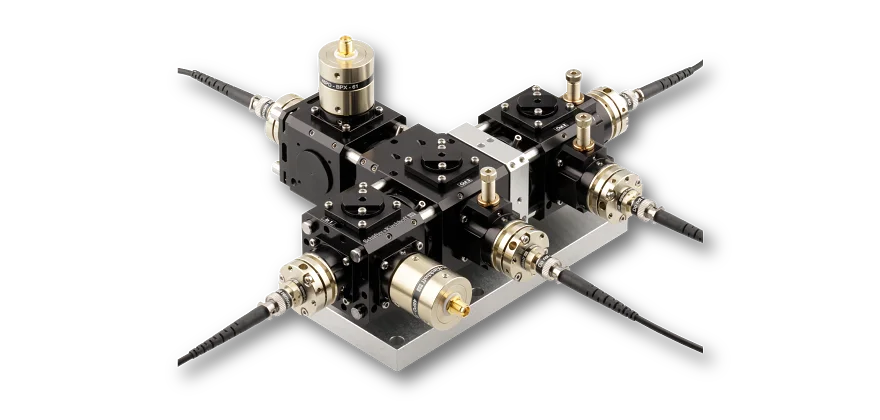Features
Fiber Port Cluster type 48-FPC-2-3_n-xxx for two input sources with the same wavelength.- Configuration 2 ⇾ 3 n
- Highly efficient coupling into polarization-maintaining fiber cables
- Adjustable splitting ratio
- Compact, rugged, transportable and sealed opto-mechanical units
- Fully fiber-coupled
- Very high long-term stability, efficiency and reproducability
- Parallel superposition of input polarizations in all three output ports
